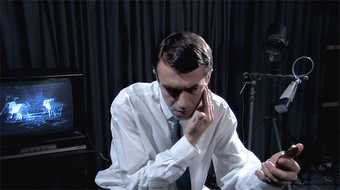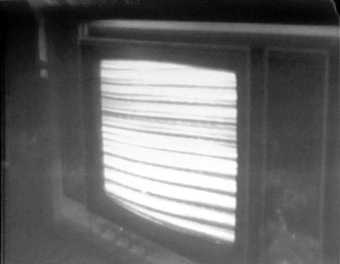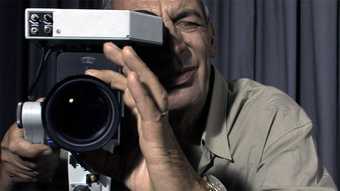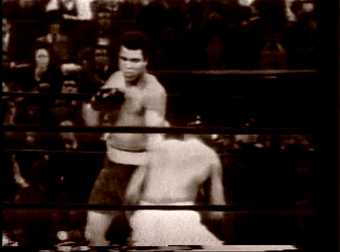The material structures of the TV studio, including sets, production apparatus and control rooms, provide a starting point and a setting for many contemporary artists seeking to explore televisionās changing institutional architecture and culture.ĢżThe screening will be preceded by an illustrated lecture by Maeve Connolly that will consider how artists from pioneers as diverse as Videofreex, Ant Farm and Micheal Asher toĢżcontemporary artists such as Michelle Deignan, Alexis Hudgins & Lakshmi Luthra, Stefanos Tsivopoulos, Katya Sander and Liz Magic Laser, among others, have recreated, re-imagined and reconfigured the television studio in performances, installations and single channel works.
Programme
Process Video Revolution,ĢżVideofreex, USA 1971, video, 23 min
ĢżThis tape, shot in April 1971, documents the making of a WNET/13 TV show about video collectives and how they use the new video technology. The video is a first-person video diary of Videofreex Skip Blumberg and Parry Teasdale as they crash the live TV broadcast uninvited. Shot by Blumberg, they go into an office building, which he says is the āCIA headquarters.ā It is actually Studio 46, a TV studio, which later became WNET/13's famed TV Lab. Various early video pioneers are in the studio discussing how they use video technology. However, there are technical problems at the TV station that prevent the show from running properly. Blumberg is repeatedly told not to tape, but continues nevertheless. There is some discussion of union issues (and a threat of violence) before he goes into the control room where a clip from a tape of a Women's Liberation demonstration is being played. āĢż
The Amarillo News Tapes,ĢżDoug Hall, Chip Lord, and Jody Procter, USA 1980, video, colour, sound, 26 min
ĢżThis video reflects my interest in examining cultural institutions. InĢżThe Amarillo News Tapes, we were interested in observing and dissecting what makes news in a small, Midwestern television market. The video shows the three of us in our respective roles as anchor, weatherman, and sportscaster, interacting with the real Pro News Team on the set. In such episodes as: Opening Routine, Liberal Fire, and Two Stories, we attempted to draw attention to the oddities of language and theater that are a part of television news.Ģż Although these sections are humorous, our purpose was not to parody the news for its own sake but to examine its style and ritual, which is as much about fiction as it is about fact.
Doug Hall
ĢżUntitled (The Remake),ĢżStefanos Tsivopoulos, Greece 2007, HD video, 14 minĢż
Produced as part of the first Athens Biennale (2007), Tsivopoulos combines archival footage from the years of the 1967ā1973 military dictatorship in Greecewith his own footage. The artist re-constructed a late 1960s television studio, complete with all the original technical equipment that was used during this period. Untitled (The Remake)Ģżinvites the viewer to reflect on the development of television media and the changes wrought in the field of broadcast news in the ensuing period, as well as its increasingly dominant role in the mediation of reality and the shaping of peopleās consciousness.
Televised I: The I, the Anchor and the Studio,ĢżKatya Sander, 2006, video, 15 min approx [extract]
In Katya Sanderās project she set out to explore television news and ask: āWhat is a news-studio? What kind of speech becomes possible from this space ā and what kind of subject? What does it mean to āanchorā the news? How to ask this question to a news anchor? That is, how to get a news anchor to speak about her/his own position in the news?ā




